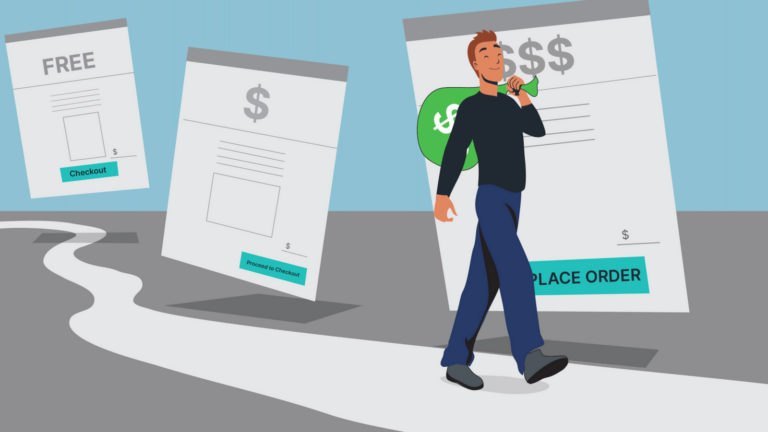How to Price Your Online Course: 10 Proven Tactics for Success - Today Testing

Creating a course is hard work, but you know what’s arguably even harder? Trying to figure out how to price your online course.
You want the price of the course to be low enough so that it’s affordable for your target audience, but not so low that you’re devaluing your content and making your brand look cheap and untrustworthy. You also want the price of your online course to be high enough so that you can earn some good money from it, but not so high that it prices out your target audience.
After spending years in the course space, I’ll discuss 10 proven tactics I’ve used that will make pricing your online course simple and straightforward.
Table of Contents
Everything You Need To Know About How To Price Your Online Course
1. Know your goals
If there’s one thing I’ve learned working with various clients to create online courses, it’s that everyone’s purpose for their course is unique.
What exactly are you looking to get from selling this course?
Is reaching the maximum number of people so you can grow your brand your biggest goal?
Or is maximizing the profitability of your course what you’re after?
Is the course you’re selling just an entry point to a bigger product that you actually care most about selling?
Or maybe you just want to break even on the cost of creating and marketing your course?
Before you even start researching what everybody else is doing, you need to clearly identify your own goals.
Knowing your goals is an important step in figuring out how to price your online course. Once you know what you’re working towards, it’ll be easier to set a price that’ll help you reach those goals.
2. Research courses in your niche
Only after you’ve thought about your own personal goals can you then start to look and see what others in your niche are doing.
See what the average price point is for a course that offers similar content to yours and look at what the most popular and successful courses are charging. You can do this by looking on course marketplaces like Udemy or by simply Googling for online courses in your subject area.
By doing this, you’ll get a better idea of how to price your own course.
But remember, you don’t have to set your price exactly at the average or copy what everybody else is doing. You can always zig when everybody else is zagging, using your pricing as a means to separate your course from the others (e.g. pricing your course well above other competing courses could be used to create the impression that your course is more robust and delivers premium content).
Calculate the Costs and Time You've Invested in Creating Your Course
You probably put a lot of time, effort, and possibly even cash into creating your course.
You’ll need to take all of that into account when you’re setting your price.
Don’t forget to factor in the cost of any outsourced work, software you’ve used (i.e. are you using Kajabi to create and sell your online course?), and course marketing efforts you’ll be putting in place going forward.
Then, once you have all of those costs calculated, decide how much money you want to make on top of that.
Don’t forget to also account for how many sales you need to make in order to reach your desired income amount.
All of this information will help you come up with a good starting point for how to price your online course.
Assign a Value to the Benefits of Your Course Content
The knowledge your students will learn from taking your course has a value.
You need to assign a dollar amount to that value and then price your course accordingly.
This can be a little tricky, but it’s important to remember that your course is delivering real, tangible benefits to your students.
For example, if you’re teaching people how to start their own business, the value of the knowledge they’ll gain from your course is much greater than the cost of the course itself.
Or if you’re teaching people how to save more money in their daily lives, calculate how much they could potentially save by using all of the info in your course.
I love to use these numbers in my marketing to help justify the cost of my courses.
5. Present your course in an appealing way
Too many creators underestimate the importance of branding when it comes to their online course. While an online course is a digital, non-tangible product, how it’s “packaged” and presented still matters.
If you’re selling a course, put thought and effort into how the sales page looks.
Use high-quality images, make it easy for students to see what they’ll be learning, and write a catchy headline that will reel them in. You may even want to create a custom logo for your course and potentially even mock up images of your course as an actual physical product.
Remember, people are more likely to buy when they feel like they’re making a good investment.
Ensure that your course is presented in a way that makes it look professional.
6. Set a price that's fair for you and your students
The best price for your course is one that both you and your students are happy with.
Don’t undervalue your course and don’t overprice it, either.
Find a price that’s fair for everybody and makes both you and your students feel like they’re getting a good deal.
7. Create pricing plans
One of the strategies I’ve tested out is to offer different pricing plans for my course offerings.
For example, you could have a basic course that’s lower in price and then offer an upgraded version that includes more content or access to bonus materials.
You could also allow students to pay in installments or offer a discount for signing up for multiple courses.
There are lots of different ways you can give your potential students options so they can choose the pricing structure that’s best for them.
8. Offer discounts sparingly
I know a lot of course creators love to play the discount game, but in my experience, you have to proceed with caution here. If you’re using discounts to entice people to buy your course, make sure that you don’t do it too often or discount things too much.
Why not?
Because it devalues your course.
If people know that they can get a discount for your course, they may be less likely to buy it at full price.
The exception to this is if you’re running a sale or promotion for a limited time.
Likewise, if the discount is so extreme it creates the perception that maybe your course really isn’t worth the full price, which can also backfire.
Make sure the discounts are still fair for both you and your students.
9. Experiment to find what works best for you
There’s a good chance that you won’t get the pricing for your course perfect right out of the gate. That’s okay — you don’t have to be married to it.
Try out different prices, discount structures, and plans to see which ones work best for you and your students.
Keep in mind that what works for one person might not work for another, so it’s important to experiment until you find something that both parties are happy with.
10. Track your results and course sales
Pricing your course isn’t about setting it and forgetting it.
You need to track how your pricing changes impact your course sales.
If you lower the price of your course, does that mean you’ll sell more copies?
What about if you raise the price?
Are there certain discounts or payment plans that are more popular than others?
By tracking your results over time, you can optimize your pricing strategy to ensure that your course is selling as many copies as possible.
FAQS
Where should you sell your online course?
There are a few different places you can sell your online course. You can set up your own website and use it to sell your courses directly to students while leveraging a platform like Kajabi (check out our Kajabi review), or you can post your course on online marketplaces like Udemy or Coursera. You could also use a combination of these methods, depending on what works best for you.
How can you make your online course more valuable?
There are a few things you can do to make your online course more valuable to students. You can add extra content or bonus materials, or you could offer access to a private forum or community of other students. You could also give students the option to purchase personal coaching or mentorship from you.
What's the best way to price my online course?
There’s no one-size-fits-all answer to this question. You’ll need to experiment with different pricing structures and plans to see what works best for you and your students. Keep in mind that what works for one person may not work for another, so it’s important to try out different things until you find something that both parties are happy with.
Can I offer a discount for my online course?
There’s no right or wrong answer to this question — it depends on what works best for you and your students. You could offer discounts for signing up for multiple courses, or you could allow students to pay in installments. However, make sure that you don’t discount your course so much that it devalues it in the eyes of your students.
How much do online courses usually cost?
The price of online courses can vary widely, depending on the content and format of the course. You’ll see courses as cheap as $20 and as expensive as $2,000 or more.
Should I offer a money-back guarantee for my online course?
Many course creators choose to offer a money-back guarantee in order to give students peace of mind and increase confidence in the quality of their courses. Others feel that it’s unnecessary or that it could create more work for them. Again, it’s up to you to decide what’s best for you.
How much money can you make selling online courses?
This varies widely, depending on the content and format of your courses, as well as how popular they are. Some course creators make a few hundred dollars a month, while others make six or seven figures.
Final Thoughts
Pricing your online course can seem daunting, but if you follow these tips, you’re sure to find a pricing plan that works for both you and your students.
If you’re looking for more tips for launching your course, I highly recommend checking out this online course checklist.
This post may contain affiliate links and we may earn commissions. Learn more in our disclosure.



